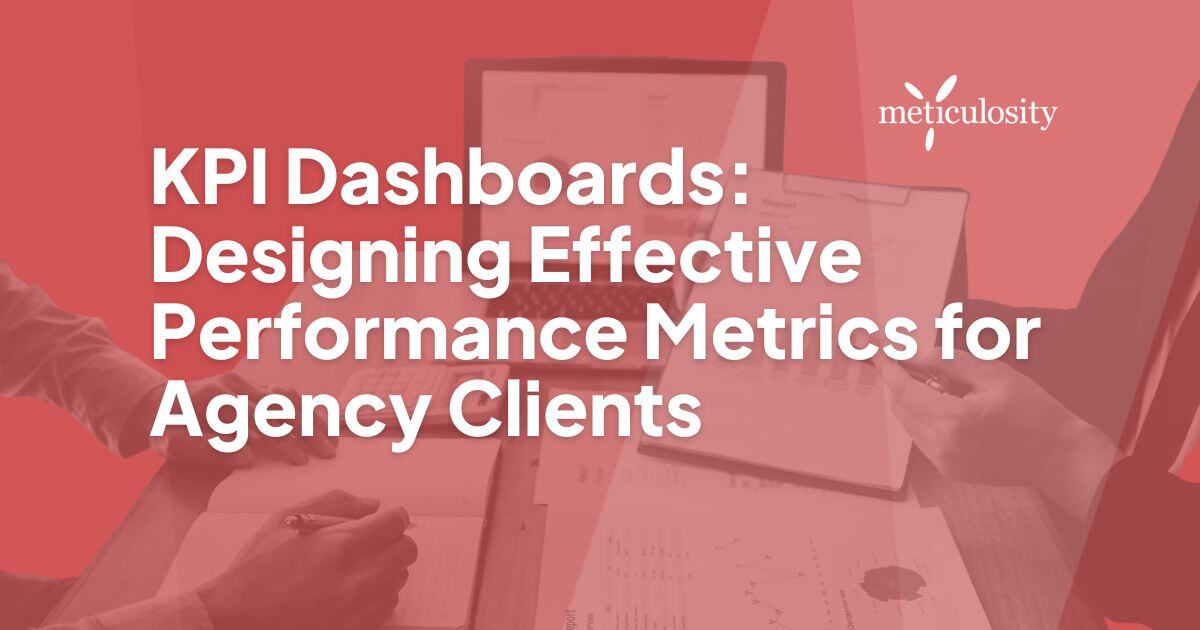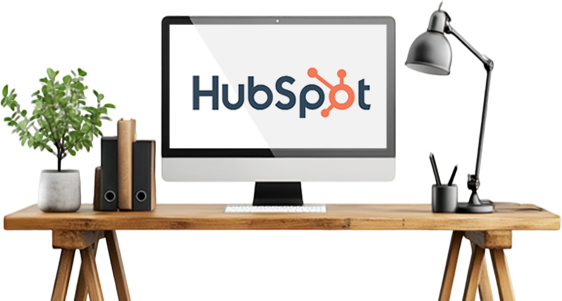Key performance indicators (KPIs) are the backbone of data-driven decision-making for agencies and their clients. A well-structured KPI dashboard provides clear insights into performance metrics, helping clients measure success and optimize their strategies. However, designing an effective dashboard requires more than just compiling data; it must be structured, visually engaging, and aligned with client goals. In this blog, we’ll explore best practices for building KPI dashboards that deliver real value.
Looking to streamline client reporting and enhance your agency’s automation capabilities? Discover how Meticulosity’s Agency Automation Solutions can transform your workflow.
Understanding the Role of KPI Dashboards in Agency-Client Relationships
KPI dashboards serve as a bridge between agencies and their clients, ensuring transparency and fostering data-driven decision-making. By presenting real-time insights into marketing, sales, or customer engagement metrics, these dashboards help clients gauge the effectiveness of their campaigns and make informed adjustments.
For agencies, dashboards also streamline reporting, reducing the need for manual updates and repetitive data explanations. Instead of sifting through raw data, clients can quickly interpret visualized insights and track progress against their business objectives.
Identifying the Right KPIs for Your Clients
Vanity Metrics vs. Actionable KPIs
Not all metrics are created equal. While some may seem impressive, they don’t necessarily indicate meaningful progress. Vanity metrics, such as social media likes or total impressions, may look good on paper but often fail to translate into tangible business outcomes. Instead, agencies should prioritize KPIs that directly impact business growth, such as conversion rates, customer acquisition cost, and revenue per lead.
Aligning KPIs with Business Goals
Each client has unique objectives, making it essential to tailor KPI selection to their specific industry and business model. For instance, an ecommerce client might prioritize conversion rates and average order value, whereas a B2B marketing firm may focus on lead-to-customer conversion rates and marketing-attributed revenue. Understanding these nuances ensures the dashboard delivers relevant, high-value insights.

Focusing on Actionable Insights
The best KPIs highlight areas for improvement and provide a roadmap for future strategies. A dashboard filled with irrelevant or overly complex data can overwhelm clients rather than empower them. Agencies should focus on presenting data that leads to clear, actionable next steps.
Best Practices for Designing an Effective KPI Dashboard
Clarity and Simplicity
A successful KPI dashboard should be easy to read and interpret. Overloading a dashboard with too many metrics can cause confusion rather than clarity. Agencies should aim to display only the most critical data points that directly impact client goals.
Customization for Different Clients
No two businesses are the same, and neither should their KPI dashboards be. Agencies must tailor dashboards to align with client-specific needs. A SaaS company may require metrics related to customer churn and monthly recurring revenue, while a local business may be more concerned with foot traffic and customer engagement.
Real-Time Data Integration
To be truly effective, dashboards should reflect real-time data. Automated data retrieval ensures that clients always have the most up-to-date information at their fingertips, reducing the need for manual reporting and improving efficiency.
Visual Appeal and Usability
A visually engaging dashboard enhances user experience and improves data comprehension. Using graphs, charts, and color-coded indicators makes it easier to identify trends and areas requiring attention. Additionally, ensuring mobile accessibility allows clients to review key metrics on the go.
Tools and Platforms for Building KPI Dashboards
HubSpot Reporting & Dashboards
HubSpot provides an intuitive reporting and dashboard tool that enables agencies to track marketing, sales, and customer service performance in a centralized platform.
Google Looker Studio
This free, customizable tool allows agencies to pull in data from various sources and create visually appealing reports tailored to client needs.
Tableau
Tableau offers advanced data visualization capabilities, making it a great option for agencies handling large data sets and requiring deep analytics.
Databox
Databox is designed specifically for agencies, providing an easy-to-use interface for creating client-ready reports with automated data updates.
When choosing a dashboard tool, agencies should consider factors such as ease of use, integration capabilities, and the level of automation required for seamless reporting.
Ensuring Client Engagement and Adoption
Educating Clients on Dashboard Usage
A dashboard is only valuable if clients know how to use it. Agencies should provide clear explanations, training sessions, or even a quick tutorial on how to interpret the data presented.
Automating Reports and Alerts
Setting up automated reports and alerts helps clients stay informed without needing to log in daily. Key metric changes, such as a sudden drop in website traffic or a spike in conversions, should trigger real-time notifications.

Regular Dashboard Optimization
Client needs evolve, and so should their dashboards. Agencies should schedule periodic reviews to ensure KPIs remain aligned with business objectives and make necessary adjustments to improve usability and effectiveness.
Common Pitfalls to Avoid
Overcomplicating the Dashboard
Too much data can be overwhelming. Agencies should resist the urge to pack dashboards with every possible metric and instead focus on what truly matters.
Ignoring Data Accuracy
Dashboards are only as good as the data feeding them. Ensuring data accuracy and proper integration with tracking tools like Google Analytics or CRM platforms is crucial for reliable reporting.
Failing to Align with Client Objectives
If a dashboard doesn’t reflect a client’s key business goals, it loses its value. Agencies must consistently check in with clients to ensure the dashboard meets their needs and expectations.
Conclusion
A well-designed KPI dashboard empowers agency clients with real-time insights, making it easier to track performance and optimize marketing strategies. By focusing on clarity, relevance, and usability, agencies can create dashboards that enhance client relationships and drive measurable success.
Want to take your agency’s reporting and automation to the next level? Explore Meticulosity’s Agency Automation Solutions to see how we can help you streamline your processes and improve client outcomes.
Frequently Asked Questions
1. What is a KPI dashboard?
A KPI dashboard is a visual tool that displays key performance metrics, helping clients track progress and make data-driven decisions.
2. Why are KPI dashboards important for agencies?
They provide clients with clear insights into campaign performance, proving the agency’s value and guiding strategy adjustments.
3. What metrics should be included in a KPI dashboard?
Metrics should align with client goals but often include website traffic, conversions, ROI, customer acquisition cost (CAC), and engagement rates.
4. How can agencies ensure dashboards are client-friendly?
Keep them visually simple, focus on actionable insights, and tailor them to the client’s specific needs and objectives.
5. What tools can agencies use to build KPI dashboards?
Popular tools include Google Looker Studio, HubSpot, Tableau, Power BI, and Databox.
6. How often should KPI dashboards be updated?
Ideally, in real-time or at least weekly, depending on the client’s reporting needs and campaign activity.
7. How can agencies prevent data overload in dashboards?
Focus on essential KPIs, use clear visualizations, and avoid unnecessary data points that don’t drive decisions.







